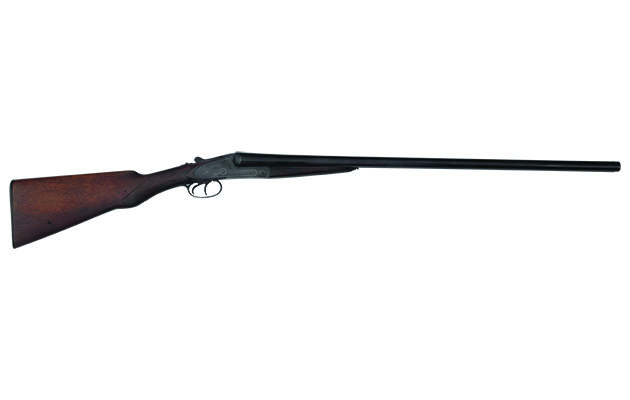Belgian 12-bore sidelock
It may not be a true classic, but you can now pick this Belgian sidelock up for £40, says Lewis Potter

Before World War II, if you could not afford to buy an English gun there was the option of an economy Belgian alternative. Of course, not all shotguns proofed in Liège were cheap; the Belgians produced some stunning examples, if not always quite to the British taste, and they were major world suppliers of Damascus barrels. However, they were also masters of making guns for the mass market and able to produce them at attractive prices.
Most of the imported doubles of reasonable quality were either copies of the Anson & Deeley boxlock — or appeared to be — but were sometimes fitted with different lock work. There was obviously some kudos to be gained by making shotguns that at least looked like the familiar Birmingham boxlock.
Sidelocks were not as common and usually had fairly simple lock work, but in this they were not alone. There were similar British designs, some even fitted with extra dummy pins to suggest a far more complex lock and therefore more expensive gun. What I remember most in the early 1960s as a young nimrod is that when you saw the Liège proof mark of a crowned oval surrounding the letters “ELG”, it meant the price would come down. It might be a sound gun but it was not British and gun snobbery ruled — it was ever thus.
Familiar features
As is often the case, the example I have chosen does not bear a maker’s name externally but is stamped “Delmotte” inside the lockplates. Most of this shotgun’s features are familiar, though the flowing shape of the pistol-grip stock is a little more in the so-called “swan neck” style that is still a feature of some Continental shotguns today. Other aspects such as the Anson push-rod fore-end catch, chequering patterns and horn butt or heel-plate are much as one might find on a Birmingham gun of the same period. The side-clips — the extensions on the sides of the standing breech that engage with the barrels — and Greener-type cross-bolt are a bit of an extravagance on a modest 2½in (65mm) chambered gun, yet the side-clips in particular were something the Continentals often seemed to favour.

The ELG Liège proof mark brings down the price
Construction
The general construction is quite straightforward, being a double-trigger non-ejector gun. It has the usual double lumps under the barrels with twin bites; the locking bolt is withdrawn by a conventional top-lever and spindle, while the safety is of the automatic type.
If anything, the action bar is a little lightweight compared with a similar British shotgun, but some of the “missing metal” appears to be the result of a simplified design for ease of production — one way to help keep the price competitive.
The lock work is plain, with a simple bridle holding the hammer (or tumbler) and sear in place. The long “toe” on the front of the hammer is where the cocking dog or lifter makes contact for the automatic cocking when the gun is opened and the barrels drop. It may look basic but, for an economy lock, it is quite well laid out so that the short mainsprings produce a good, hard strike.
Conclusion
This gun has survived the ravages of the years, though I know it has been subject to extensive use. It is a good example of an economy Belgian sidelock and, while it may not quite meet the definition of a true classic, it is very much part of our history and deserves recognition as such.
As for the slight stigma of the Liège proof marks, if I had been offered a gun like this when I was 16 it would not have bothered me — as long as the price was right.
What to look for when buying a second-hand Belgian 12-bore sidelock
Barrels: The usual checks for pits and dents; guns like this were often a little neglected, especially during later years
Action: Any break-open shotgun can shoot loose, so check fit of barrels to action and examine for hammer marks indicating bodged repairs
Weight: 63⁄4lb
Value: Side-by-sides like this are very much out of fashion, so £40 to £50.








